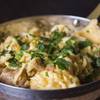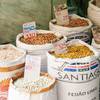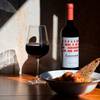כללי
תחבורה
אנשים
אירוח
אוכל ושתייה
 What is the local food like in Portugal?
What is the local food like in Portugal?
 כמה עולה האוכל?
כמה עולה האוכל?
 איזו אוכל מקומי לנסות בפורטוגל?
איזו אוכל מקומי לנסות בפורטוגל?
 מה אני יכול לאכול בפורטוגל כטבעוני?
מה אני יכול לאכול בפורטוגל כטבעוני?
 אפשר לשתות מים מהברז בפורטוגל?
אפשר לשתות מים מהברז בפורטוגל?
 What soft drinks are available?
What soft drinks are available?
 האם קיימת תרבות קפה ותה בפורטוגל?
האם קיימת תרבות קפה ותה בפורטוגל?
 מהן המשקאות האלכוהוליים שכדאי לנסות בזמן השהייה בפורטוגל?
מהן המשקאות האלכוהוליים שכדאי לנסות בזמן השהייה בפורטוגל?
 מהם ההגבלות הקשורות לצריכת אלכוהול?
מהם ההגבלות הקשורות לצריכת אלכוהול?
 Where to buy alcohol in Portugal and how much does it cost?
Where to buy alcohol in Portugal and how much does it cost?
ביקור באתרים
משפטי
כסף
בטיחות ובריאות
נסיעות משפחתיות

What are some places to eat?
There are multitudes of local restaurants to choose from, even in the tiniest villages; and it doesn’t even matter which one you pick, as they all virtually meet the same expectations in quality, price, service and selection.
This makes it challenging to have a less than stellar dining experience, which is probably why the Portuguese eat out so often.
At breakfast, any café, pastelaria (pastry shop) or confeitaria (confectioners) can provide a croissant or brioche, some toast (uma torrada; a doorstep with butter), a simple sandwich (a tosta mista is grilled ham and cheese) or some sort of cake or pastry. A padaria is a bakery, and any place advertising pão quente (hot bread) will also usually have a café attached.
Portuguese restaurants which are called restaurantes run the gamut, from rustic village eatery to designer hot spot, while meals are also served in a tasca which is Portuguese for tavern and, less commonly these days, a casa de pasto meaning a cheap local dining room. A cervejaria is literally a “beer house”, usually more informal than a restaurant and typically serving up steaks and seafood. A marisqueira is also a seafood place, while a churrasqueira specializes in char-grilled meat.

אם אני יכול להשתמש בכרטיס חיוב או אשראי?

איפה אני יכול להחליף מטבע?

אפשר לשתות מים מהברז בפורטוגל?

איזו אוכל מקומי לנסות בפורטוגל?

מה עלי לדעת על התרבות המקומית?
